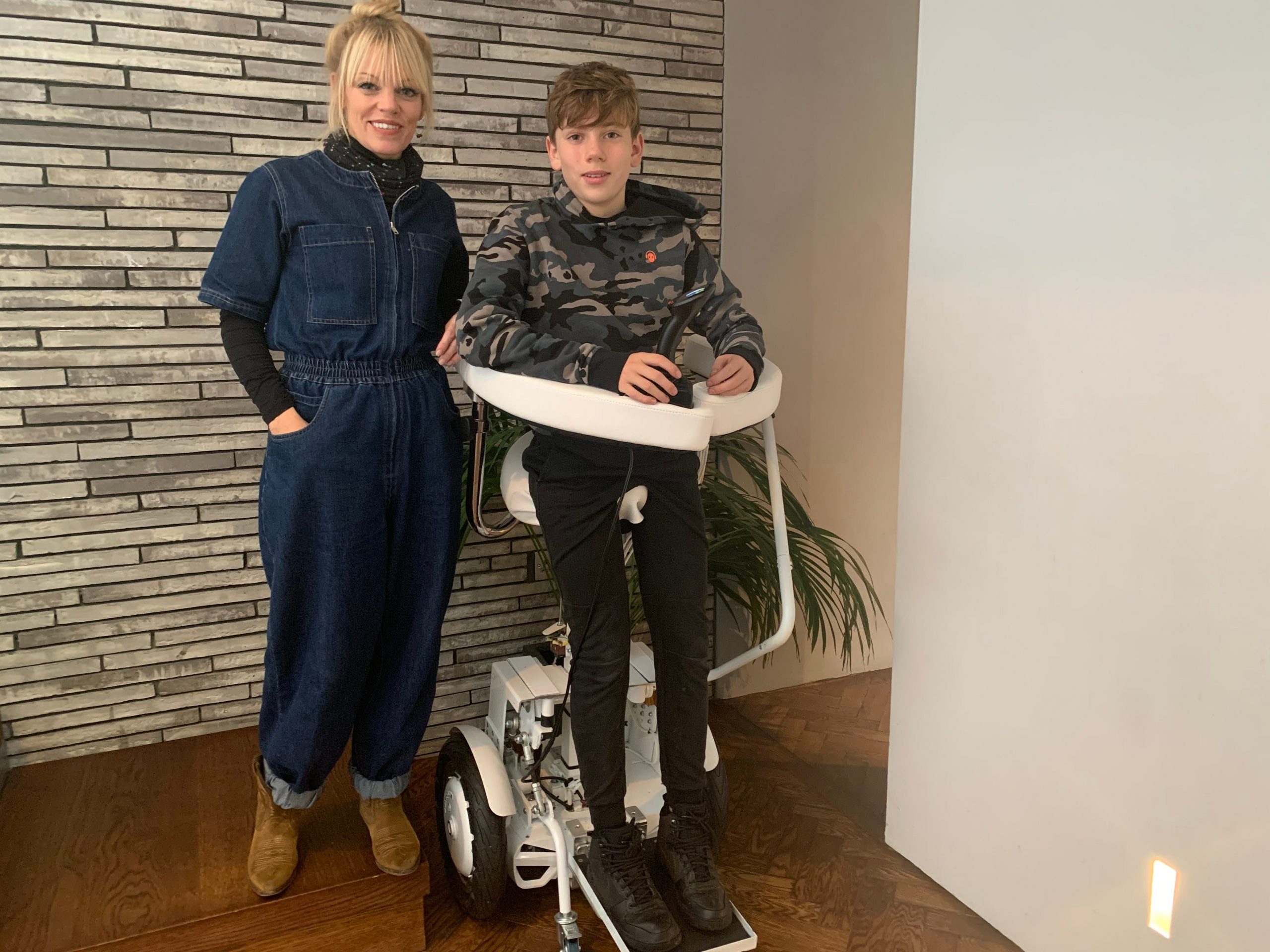
Suzanne Brewer
- Standing wheelchairs offer health benefits and social inclusion for those with limited mobility, but they can be quite pricey.
- Suzanne Brewer, an architect living in the UK, designed a cost-effective standing wheelchair made of parts ordered online.
- The Walking Wheelchair has a Segway base and a saddle seat.
- The prototype is patent protected, and Brewer hopes to bring the device to market soon with some help.
- Visit Insider’s homepage for more stories.
- Standing wheelchairs offer health benefits and social inclusion for those with limited mobility, but they can be quite pricey.
- Suzanne Brewer, an architect living in the UK, designed a cost-effective standing wheelchair made of parts ordered online.
- The Walking Wheelchair has a Segway base and a saddle seat.
- The prototype is patent protected, and Brewer hopes to bring the device to market soon with some help.
- Visit Insider’s homepage for more stories.
When British architect Suzanne Brewer saw a man in a wheelchair get lost in the Christmas crowd at her local rugby club, she wondered why there wasn’t some sort of assisted mobility device that could raise him up to eye level.
The experience stuck with her, and after seeing an advertisement for a Sky News children’s enterprise competition in 2018, she encouraged her now 13-year-old son Jarvis to enter with the idea. His collaged design of a “Walking Wheelchair” with a Segway base has since gone through two prototype phases and has a patent pending.
Other standing wheelchairs do exist, but they are “enormously expensive,” said John McFarlane, a polio survivor who is paralyzed from the chest down. He uses a wheelchair that costs nearly $30,000 (£25,000) and can raise him to a standing position. In comparison, the average motorized wheelchair costs between $2,000 and $3,000.
Sitting in a wheelchair makes it difficult to order a drink at a bar or even keep up with a conversation that’s going on over your head, McFarlane told Insider. Not only does a standing mobility device promote social inclusion, but spending time in an upright position also has benefits for bone density, blood flow, and ease of digestion, he said. However, the price tag on standing wheelchairs is a barrier for most people.
The Brewers hope to keep the cost of their “Walking Wheelchair” down to less than half of the price of existing standing wheelchairs by building it out of parts ordered online, including a seat inspired by Jarvis’ bicycle and a Segway base.
The Walking Wheelchair is made of a saddle seat and a hand-operated Segway
For the Sky News competition, Jarvis collaged together a rough design in which a joystick-controlled mechanism lifts a saddle seat upwards, bringing the user to a standing position. The base of the contraption would be a Segway, also controlled via joystick, which would allow a tighter turn radius than a conventional wheelchair.
After receiving encouraging feedback in the competition, the Brewers decided to take the design a step further with a prototype made of parts from a secondhand wheelchair, a kid's Segway, and some other "bits and bobs" ordered on the Internet. Although it looked "quite crude," Brewer said it proved the concept was feasible.
They enlisted the help of David Aviram, a structural engineer, to build a more sophisticated second prototype out of similar parts. They also ran the design by McFarlane and occupational therapists at Stoke Mandeville Hospital, which is home to a world-renowned spinal injuries center.
The Segway base allows for a tight turn radius, but the trade-off is balance
Compared to existing standing and seated wheelchairs, the Walking Wheelchair offers a tighter turn radius thanks to its two-wheel Segway base.
"The good thing about not knowing that any standing wheelchairs existed was that we were starting from scratch in our minds really, so we didn't have any preconceptions," Brewer said.
Most standing wheelchairs lift the user to an upright position with a tilting motion, requiring a heavy base to balance out their weight. The Walking Wheelchair's Segway base, on the other hand, contains gyroscopic sensors for self-balancing.
However, occupational therapist Scott Trudeau told Insider he worries the two-wheeled base may come with an increased risk of falls.
"What you end up gaining in terms of flexibility, you lose in terms of stability," Trudeau said.
Trudeau said he would need to see data from safety testing to evaluate the stability of the Walking Wheelchair, but based on a first look, he thinks the device may be better suited for children, who have a lower center of gravity and the fallback of parental support and supervision.
Brewer hopes to bring the Walking Wheelchair to market soon
Brewer has applied for a patent for the second prototype and it's currently on its way to being finalized. But in order to put the Walking Wheelchair through safety testing, she needs to find a partner to help license and manufacture the device.
Although she knows the road ahead will be long and expensive, Brewer feels confident that her team will be able to push forward as they have at past obstacles.
"If you've done something before and you know it's an uphill battle, then you can be a bit jaded by that," Brewer said. "But because we've never done anything like this before and we were all full of enthusiasm, as we got to each hurdle, we just asked for advice and kind of dealt with it."
Read more:
What it's like to date when you use a wheelchair
14 world-changing innovations by women that were originally credited to men

